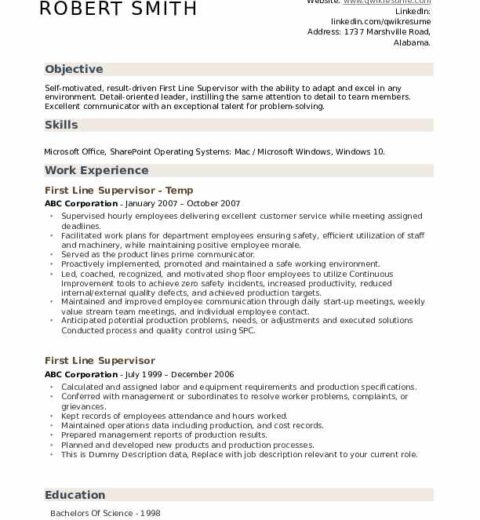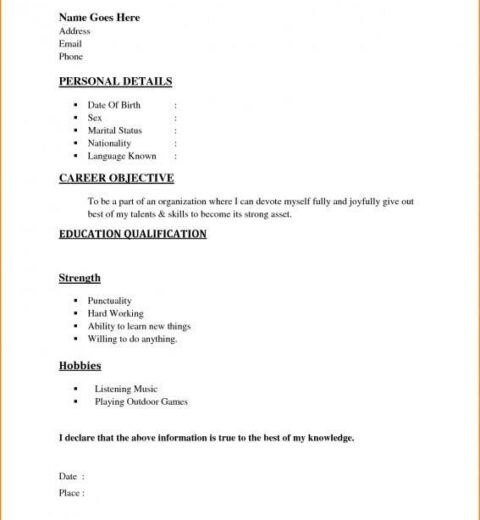Crafting a resume is akin to composing a symphony; each element must harmonize perfectly to produce a captivating masterpiece that resonates with potential employers. A well-structured resume serves as a visual and textual representation of your professional narrative, encapsulating your experiences, skills, and aspirations. Below, we explore the multifaceted process of writing a compelling resume, peppered with examples that demonstrate effective strategies for optimum impact.
Understanding Your Audience
Before embarking on the journey of resume creation, it is essential to understand the audience—potential employers and hiring managers. Tailoring your resume to the specific job is like adjusting the melody of a song to fit the mood of the gathering. Research the company, analyze the job posting, and discern the skills and attributes essential for the role. This intelligence gathering phase will inform the direction of your document.
The Skeleton: Structuring Your Resume
Just as a building requires a solid foundation, so too does a resume necessitate an organized structure. Typically, a resume contains the following core components:
- Contact Information: Prominently display your name, phone number, email, and LinkedIn profile at the top.
- Objective or Summary Statement: A compelling opening statement succinctly articulating your career aspirations and what you bring to the table. For instance, “Dynamic marketing professional with over five years of experience in digital strategy seeking to leverage analytical skills to drive brand growth.”
- Professional Experience: Detail your previous roles in reverse chronological order, emphasizing accomplishments over generic duties. Use quantifiable metrics to illustrate your impact.
- Education: List your degrees, certifications, and relevant courses that bolster your qualifications.
- Skills: A concise list of specific skills relevant to the position, including both hard and soft skills.
- Additional Sections: Consider adding sections for volunteer work, publications, or professional affiliations that enhance your candidacy.
A skeletal outline is critical; it paves the way for your resume’s muscle and sinew— the content that will breathe life into the structure.
Filling in the Flesh: Content Creation
With the skeleton in place, the next step is to flesh out each section with substantive, impactful content. This is where creativity meets strategy. For example, when describing your professional experience, think of it as crafting a narrative rather than simply enumerating tasks.
Example:
“While serving as a project manager at ABC Corp, I spearheaded a cross-functional team that launched a new product line, resulting in a 20% increase in revenue within the first quarter. This strategic initiative showcased my ability to manage complex projects while fostering collaboration amongst diverse teams.”
This vivid description not only highlights your skills but also draws the reader’s attention by illustrating the tangible results of your efforts.
The Art of Language: Choosing the Right Words
Your choice of words is akin to a painter selecting colors for a canvas; it can evoke emotions and create a lasting impression. Use action verbs to convey dynamism and decisiveness. Words such as “orchestrated,” “innovated,” “exceeded,” and “streamlined” add a layer of vigor to your descriptions.
For instance, instead of stating, “Responsible for social media management,” consider rephrasing it to, “Orchestrated a comprehensive social media strategy that amplified brand awareness by 50% in six months.” This minor adjustment not only enhances readability but also imbues your resume with energy.
Designing for Impact: Aesthetic Considerations
Visually, your resume must be as appealing as it is functionally effective. The layout should be clean, utilizing white space to ensure readability. A professional font and consistent formatting will lend an air of sophistication. Utilizing bullet points can guide readers’ eyes succinctly through your achievements.
Consider integrating subtle design elements such as lines or borders to differentiate sections without creating visual clutter. A well-designed resume serves as an elegant presentation of your professional journey.
Tailoring for Success: Customization Techniques
As mentioned, customization is key. Each job application is unique; therefore, your resume should echo the specific language and requirements mentioned in the job description. Utilize keywords and phrases that appear within the posting. This not only aligns your qualifications with the employer’s expectations but also aids in passing through Applicant Tracking Systems (ATS) that many companies utilize.
When applying for a marketing position, for instance, ensure that terms like “content marketing,” “SEO,” or “campaign management” are prominently featured if they align with your experience. This linguistic alignment acts as a bridge, connecting you directly with the needs of the organization.
Closing Thoughts: The Final Piece of the Puzzle
In writing a resume, each element plays a pivotal role in constructing a cohesive narrative that showcases your professional identity. By understanding your audience, structuring effectively, filling in with compelling content, and designing with care, you weave a story that captures attention, communicates value, and invites opportunities. Remember, your resume is more than a mere document; it is a powerful marketing tool introduced to showcase the unique appeal of your professional journey. Approaching this task with thoughtful consideration and creativity will undoubtedly elevate your prospects in the competitive job market.




